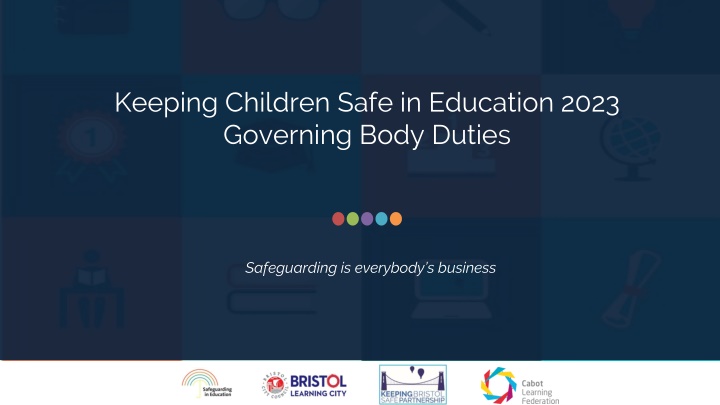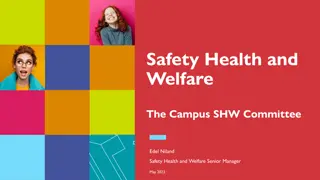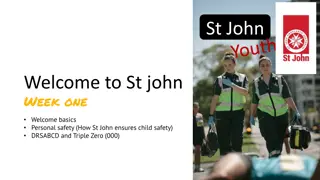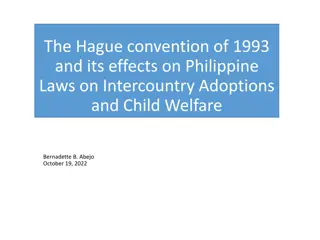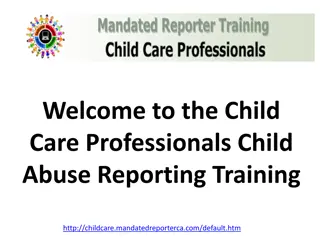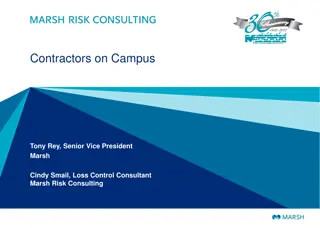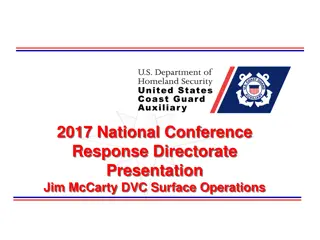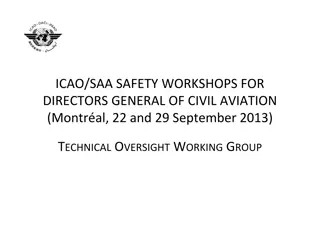Ensuring Child Safety in Education: Governing Body Responsibilities
Governing bodies in education play a crucial role in safeguarding children. They must comply with legislation, have robust policies and procedures in place, appoint designated safeguarding leads, and promote a whole-school approach to child protection. Additionally, they should engage in multi-agency working, prioritize information sharing, and ensure staff training on safeguarding. By following these guidelines, educational settings can create a safe environment for children to learn and thrive.
Download Presentation

Please find below an Image/Link to download the presentation.
The content on the website is provided AS IS for your information and personal use only. It may not be sold, licensed, or shared on other websites without obtaining consent from the author.If you encounter any issues during the download, it is possible that the publisher has removed the file from their server.
You are allowed to download the files provided on this website for personal or commercial use, subject to the condition that they are used lawfully. All files are the property of their respective owners.
The content on the website is provided AS IS for your information and personal use only. It may not be sold, licensed, or shared on other websites without obtaining consent from the author.
E N D
Presentation Transcript
Keeping Children Safe in Education 2023 Governing Body Duties Safeguarding is everybody s business
KCSIE role of governing body/proprietors Compliance with legislation & guidance: Ensure that policies, procedures and training in settings are effective and always comply with the law. Appoint someone at senior board level to take leadership responsibility for setting s safeguarding arrangements. Attend governor specific safeguarding training. Human Rights Act 1998, Equality Act 2010, and the Public Sector Equality Duty and their Local multi-agency safeguarding arrangements. Whole school approach to safeguarding: Safeguarding and child protection are at the forefront and underpin all relevant aspects of process and policy development. All systems, processes and policies should operate with the best interest of the child at their heart. The child s wishes and feelings are taken into account. Systems should be in place, well promoted, easily understood and easily accessible for children to confidently report abuse. Concerns will be treated seriously, where learners can express their views and give feedback.
Safeguarding Policies and procedures which must be in place Safeguarding and child protection policy. Behaviour Policy Staff behaviour policy. Children who go missing safeguarding arrangements. Other considerations Have a risk-based approach to the level of information provided to temporary staff How are safeguarding and child protection files maintained Appropriate safer recruitment policies. More than 1 emergency contact number for each learner. The Designated Safeguarding Lead: An appropriate senior member of staff from the setting s leadership team is appointed to the role of the DSL. DSL should have appropriate status and authority, be given the additional time, funding, training, resources, and support needed to carry out the role effectively More information in Annex C - (including online safety and understanding the filtering and monitoring systems and processes in place)
Multi-Agency Working Ensure that settings contributes to multi-agency working in line with statutory guidance Working Together to Safeguard Children. Should make themselves aware of and follow their local arrangements. Governance should understand the local criteria for action and the local protocol for assessment and ensure that they are reflected in their own policies and procedures. They should be prepared to support information sharing as requested by safeguarding partners.
Information Sharing Recognise the importance of information sharing between practitioners and local agencies. The Data Protection Act & UK GDPR to process personal information fairly and lawfully. Ensuring safe and secure storage of information. Ensure relevant staff have due regard to share and withhold personal information. Staff training and opportunities to teach safeguarding Ensure that all staff undergo safeguarding and child protection training at induction and regularly updated (at least annually) including online safety which, amongst other things, includes an understanding of the expectations, applicable roles and responsibilities in relation to filtering and monitoring. Children are taught how to keep themselves and others safe including online, and safeguarding on the curriculum is integrated. Recognise the expertise staff and provide opportunities for staff to contribute to and shape safeguarding arrangements and child protection policy. Teachers' standards expectations for managing behaviour effectively requires teachers to have a clear understanding of needs of all pupils.
Child on child harm Your safeguarding and child protection policy should contain: Procedures to minimise child on child abuse, The systems in place for children to confidently report abuse how incidents are recorded, investigated and dealt with, Clear processes of how victims, perpetrators, and other children affected by child-on-child abuse will be supported, A recognition that even if there are no reported cases of child-on-child abuse, abuse may still be taking place. Zero tolerance approach to abuse - should not be passed off as banter , or part of growing up .. Gender girls more likely to be victims (cultural competency) Different forms that child-on-child harm can take.
Use of reasonable force Headteachers and governance to adopt sensible policies which allow and support their staff to make appropriate physical contact. Use of school/college premises for non-school/college activities. Ensure that there appropriate arrangements for keeping children safe Seek assurances that the provider concerned has appropriate safeguarding and child protection policies and procedures in place. Ensure safeguarding requirements are included in any lease/hire agreement. After-school clubs, community activities and tuition: safeguarding guidance for providers - GOV.UK (www.gov.uk) Alternative Provision Governance should be aware of the additional risk of harm that their pupils maybe vulnerable to.
Children at potentially a greater risk of harm Children who need a social worker New duties around promoting the educational outcomes and making reasonable adjustments to ensure a culture of high aspirations are maintained for this cohort. Duties around Children missing education and Elective Home Education. Mental health Should ensure that they have clear systems and processes in place for identifying possible mental health problems, including routes to escalate and clear referral and accountability systems. Looked after Children (Children in Care) and previously looked after children Should ensure that staff have the skills, knowledge and understanding to keep looked after children safe. Appoint a designated teacher to promote the educational achievement of Children in Care and those who have left care through adoption, special guardianship or child arrangements orders.
Children with Special Educational Needs (SEN) Ensure that the safeguarding and child protection reflects the fact that additional barriers can exist when recognising abuse and neglect in this group of children. Ensure that the safeguarding and child protection policy and practice addresses additional challenges (consider what provision is in place for extra pastoral support and attention for these children).
Part 3 - Safer Recruitment Create a culture of safeguarding and promote the welfare of learners in their setting (safer working practice). Ensure that those involved with recruitment and employment have received appropriate safer recruitment training. It is a legal requirement that governing bodies need to understand pre-appointment vetting checks, regulated activity and recording information and must ensure that these checks are carried out. Governing bodies and proprietors should ensure they have processes in place for continuous vigilance, maintaining an environment that deters and prevents abuse and challenges inappropriate behaviour.
Part 4 - Managing allegations made against/concerns raised about staff (including supply teachers, volunteers and contractors Ensure that policies and procedures make clear who allegations should be reported and that this should be done without delay. Discuss concerns around supply staff with agency/agencies. Ensure that policies and processes are in place to deal with concerns that do not meet the harm threshold referred to as low-level concerns . This process should be reflected in the staff code of conduct and safeguarding policies and implemented effectively.
